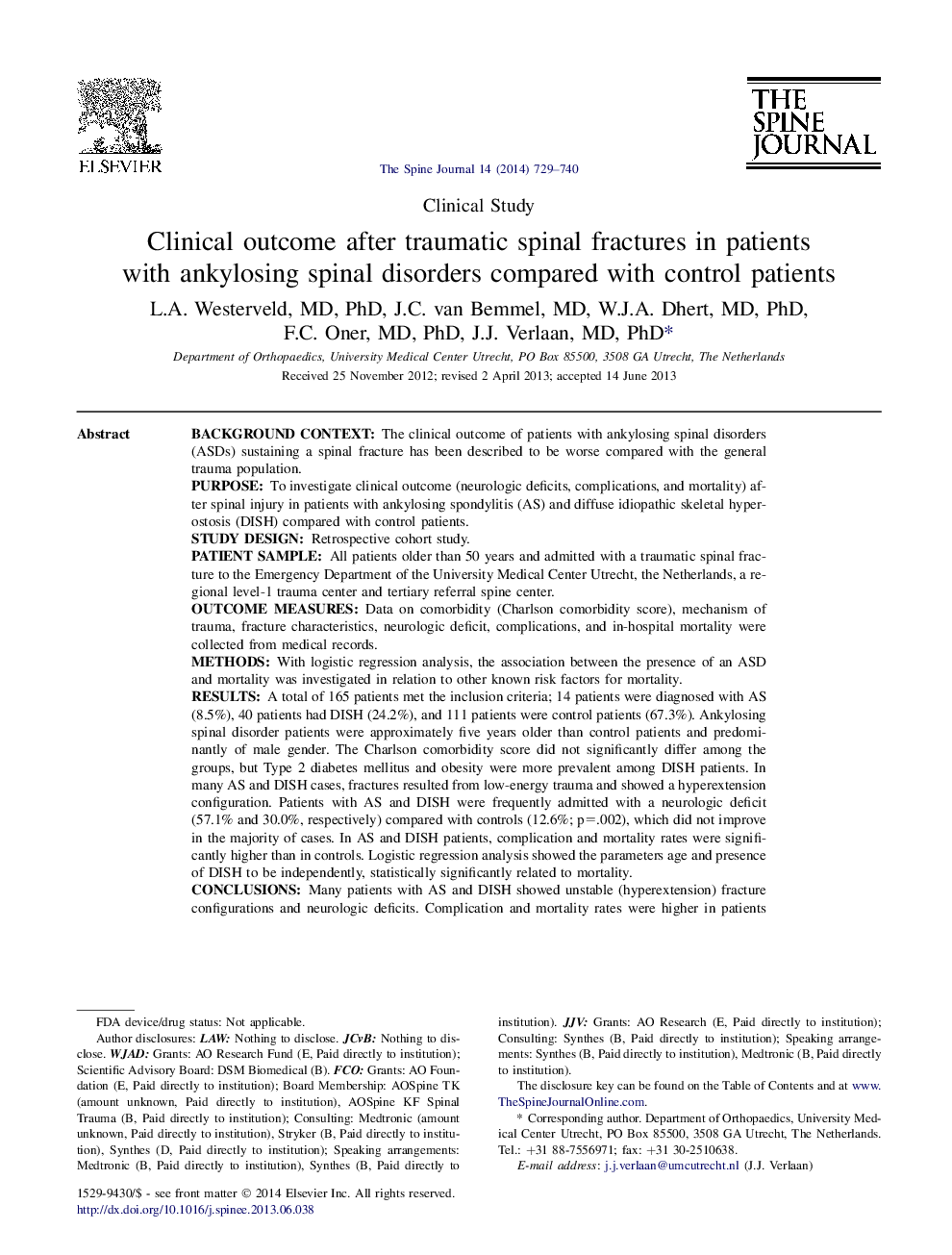| کد مقاله | کد نشریه | سال انتشار | مقاله انگلیسی | نسخه تمام متن |
|---|---|---|---|---|
| 4096918 | 1268573 | 2014 | 12 صفحه PDF | دانلود رایگان |
Background contextThe clinical outcome of patients with ankylosing spinal disorders (ASDs) sustaining a spinal fracture has been described to be worse compared with the general trauma population.PurposeTo investigate clinical outcome (neurologic deficits, complications, and mortality) after spinal injury in patients with ankylosing spondylitis (AS) and diffuse idiopathic skeletal hyperostosis (DISH) compared with control patients.Study designRetrospective cohort study.Patient sampleAll patients older than 50 years and admitted with a traumatic spinal fracture to the Emergency Department of the University Medical Center Utrecht, the Netherlands, a regional level-1 trauma center and tertiary referral spine center.Outcome measuresData on comorbidity (Charlson comorbidity score), mechanism of trauma, fracture characteristics, neurologic deficit, complications, and in-hospital mortality were collected from medical records.MethodsWith logistic regression analysis, the association between the presence of an ASD and mortality was investigated in relation to other known risk factors for mortality.ResultsA total of 165 patients met the inclusion criteria; 14 patients were diagnosed with AS (8.5%), 40 patients had DISH (24.2%), and 111 patients were control patients (67.3%). Ankylosing spinal disorder patients were approximately five years older than control patients and predominantly of male gender. The Charlson comorbidity score did not significantly differ among the groups, but Type 2 diabetes mellitus and obesity were more prevalent among DISH patients. In many AS and DISH cases, fractures resulted from low-energy trauma and showed a hyperextension configuration. Patients with AS and DISH were frequently admitted with a neurologic deficit (57.1% and 30.0%, respectively) compared with controls (12.6%; p=.002), which did not improve in the majority of cases. In AS and DISH patients, complication and mortality rates were significantly higher than in controls. Logistic regression analysis showed the parameters age and presence of DISH to be independently, statistically significantly related to mortality.ConclusionsMany patients with AS and DISH showed unstable (hyperextension) fracture configurations and neurologic deficits. Complication and mortality rates were higher in patients with ASD compared with control patients. Increasing age and presence of DISH are predictors of mortality after a spinal fracture.
Journal: The Spine Journal - Volume 14, Issue 5, 1 May 2014, Pages 729–740
